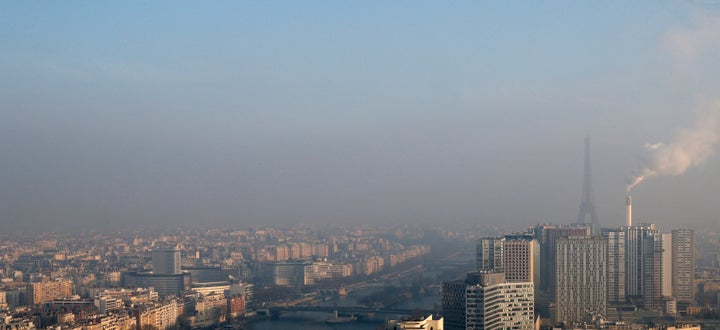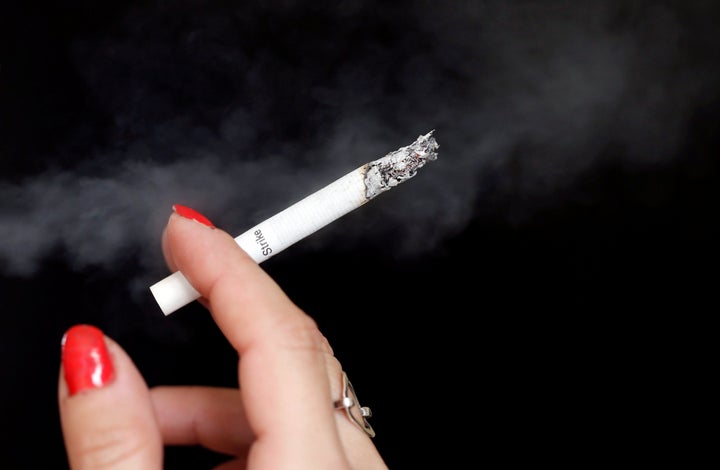I never knew that indoor air quality could be an issue until I moved to New York City from Northern California in 2009.
After settling into my shoebox-sized Manhattan apartment, I discovered that my elderly neighbor across the hall spent most of his time chain-smoking with his door open. Clouds of smoke poured into our hallway and seeped under my door. As a freelance writer, I’d spend hours sitting at my desk, trying to work, and struggling to breathe.
It was a bumpy introduction to big-city living. But what I hadn’t realized was that I was far from alone in suffering from poor air quality inside my home.
Most of us are familiar with the kind of air pollution caused by car exhaust or wildfires. The U.S. Environmental Protection Agency found that indoor air can be anywhere from two to five times as polluted as outdoor air. Household air pollution is one of the world’s greatest environmental health risks, according to the World Health Organization. In fact, a 2012 WHO study found that complications from breathing dirty indoor air are responsible for 4.3 million premature deaths each year, mostly in developing countries, where billions of people burn coal or wood to fuel indoor cooking.
Indoor air pollution “is one of the unrecognized environmental justice issues of our time,” according to Jonathan Levy, an environmental health professor at Boston University’s School of Public Health. He researches air pollution and equity issues in urban areas, and he notes that the homes of low-income families or public housing units tend to be smaller or not as structurally sound, and will have more indoor air pollution as a result.
While some sources of pollution are out of your hands, plenty of others are a result of factors you can control. Knowing what they are is the first step to improving air quality in your home.
“People are not as aware of indoor air pollution,” Levy says. “If you say ‘air pollution’ to someone, they think about the large factory or the diesel vehicle, and they don’t necessarily think about what is happening inside their homes.”

While outdoor air pollution can certainly make its way indoors through open windows or cracks in poorly sealed buildings, one of the biggest sources of dirty household air actually comes from cooking or anything involving combustion ― that is, lighting something on fire ― says Gary Adamkiewicz, a professor of environmental health and exposure disparities at Harvard’s T.H. Chan School of Public Health.
That’s because when you light up natural gas on a stove, it releases compounds like nitrogen dioxide and carbon dioxide, pollutants that are also released by fuel-burning cars and are regulated by the EPA because they irritate the lungs. So if a stove doesn’t have a good ventilation system (usually in the form of a range hood) that can push the cooking fumes outside, home-dwellers will have to breathe it. A 2014 study from the Lawrence Berkeley National Laboratory actually found that 60 percent of Southern California homes had stoves that were so poorly ventilated that they made the indoor air even more polluted than the levels the EPA has ruled as safe for outdoors.
Indoor smoking is also a huge source of household pollution, as I was unfortunate enough to learn. My neighbor eventually agreed to close his door, which was a relief, because a little paranoid Googling had yielded scary stats on what’s known as “thirdhand smoke”— when particles of nicotine and other tobacco byproducts will actually stick to the walls, rugs, and other surfaces long after the cigarette has been put out. When it’s mixed into household dust and other toxins in the air, thirdhand smoke may cause cancer, though scientists say more research needs to be done.

“What happens in a home in terms of your exposure to environmental pollutants is, in many ways, hidden,” Adamkiewicz says.
And that’s certainly the case when it comes to the cleaning products, air fresheners, and personal care products we keep inside our homes. The non-profit Environmental Working Group tested over 2,000 cleaning products, and found that many of them contain chemicals that are linked to asthma, allergies, or even cancer. EWG found that, because product manufacturers aren’t required to disclose all their ingredients, many of them don’t. So, there’s a lot we still don’t know.
Many air fresheners, for example, contain phthalates, which mimic certain hormones found naturally in the body and can potentially disrupt the body’s endocrine or reproductive systems.
Another 2012 peer-reviewed study of 50 different categories of household products conducted by the Silent Spring Institute, a nonprofit environmental health research group, found that everything from cosmetics to personal care products were made with materials that either caused asthma or were endocrine disruptors. (A list of the specific products tested is here.)
“For most consumers, they just assume that if a product is on the shelf, then all the right questions have been asked and answered about it,” Adamkiewicz says. “And that’s not necessarily the case.”
Both experts we spoke to said consumers should try to limit the sources of pollution they have control over, like scented candles and cigarette smoke, and to make sure the home has proper ventilation in areas such as the kitchen. Portable air filters can be a good solution for cleaning indoor air, as long as it has a high-efficiency particulate air (HEPA) filter, meaning it can rid the air of the tiny particles that can get caught in the lungs, which exacerbate asthma and are linked to heart attacks. Vacuums can be made with HEPA filters, too.
When it comes to buying cleaning or personal care products, read the lists of ingredients, and avoid the ones containing phthalates, formaldehyde, flame retardants, bisphenol A (found in plastics), or perfluorinated chemicals (found in non-stick pans or stain-resistant furniture). You can check the EWG’s cleaning product database here.
Oh, and don’t smoke indoors!
“You can’t necessarily eliminate these things,” says Levy of most indoor pollution sources. “It’s just about awareness, thoughtfulness, and really trying to be clever where you have the choice in alternative product use.”
